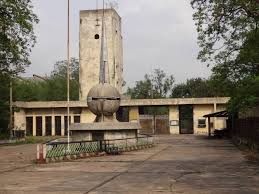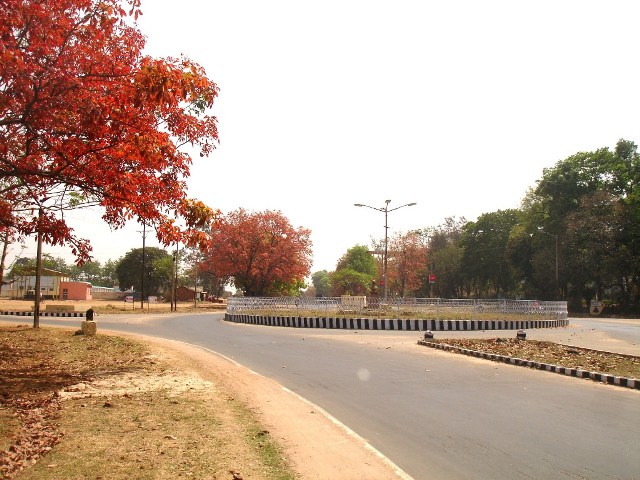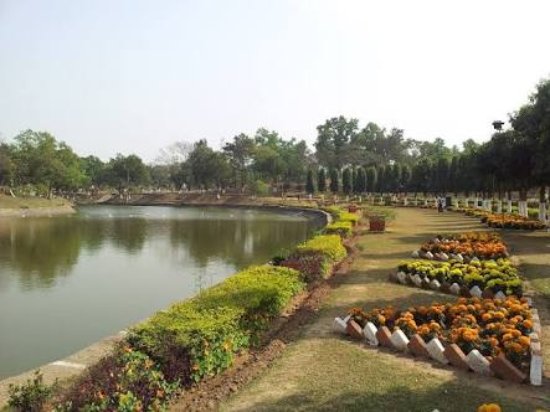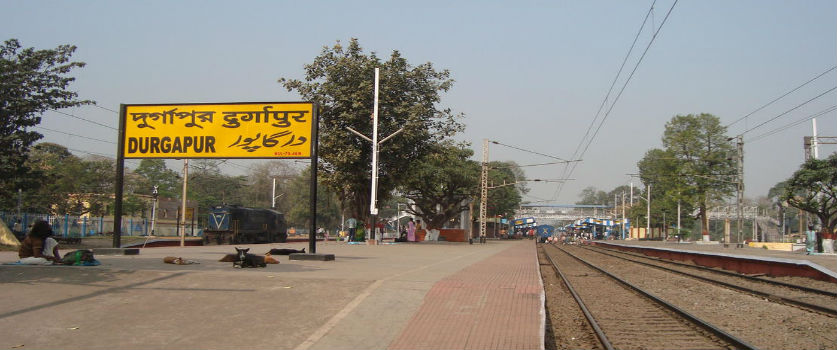D U R G A P U R…as I speak out this name, a collage of a few images becomes alive in my mind – the wide roads, the residential quarters, the daily markets, large playgrounds, the hand drawn hopscotch courts, the treasured markers of the same game, the impromptu cycling races, school premises, school functions, the journey to the intermediate college, and the neighbours who became more than relatives over time.
As most of you know, Durgapur was established by Dr. Bidhan Chandra Roy, the noted ex-chief minister of West Bengal. A lot of industries were established here because of the proximity of the sources of the needed raw materials. Residential quarters for the employees were made not far away from the respective factory sites, which, gave rise to planned townships like DSP township, MAMC township, ABL township, BOGL residential area, etc. inside the city. Alas! A few of the townships exist in a state of zombie bearing the brunt of the government policies with slim or no chances of revival.

The winters, springs and summers announced their arrivals in the most pronounced ways in Durgapur. The chilly mornings and the silent dewfalls marked the advent of winters in Durgapur as early as late October. The tall saal trees started shedding their brown leaves during this time and the winter sun glowed brightly during the day. And there were coloured wools, knitting needles, work-in-progress warm sweaters which were in the way of getting finished before the mercury fell further over the following months. The charpais and cane moras basked in the sun with the warm blankets, pillows and quilts. The non-knitters, mainly the men and the children, ate oranges meanwhile. The sweet scent of the ripe oranges used to fill the air around.

The winter nights were dark and cold wanting comforts under the warm blankets. The scent of the oranges faded away to yield place to the aroma of strong coffees and freshly steeped Darjeeling teas. The air carried the aroma of bakings, too, but the aroma was not very commonplace. People were more engrossed in making rice flour dumplings or Pithe which wereto be devoured with nolen gur (jaggery).

The springs saw fresh green leaves on the Saal trees. The bottom skyline gathered reddish hues thanks to the Krishnachura or Gulmohar trees, the Palash and Shimul flowers. The Red Oleanders or Raktakarabis appeared later, in summer. The wide roads wore flowery adornments through the summer brightening up the city as well as its residents. However, in Kumarmangalam Park, the springs and summers stayed throughout the year.

The vacations as well as the evenings saw children playing on the large playgrounds, – the mud smeared on the forgotten bicycles, the faded hopscotch courts, the hopscotch markers treasured in cardboard boxes and the air filled with distant voices whispering “chu….kitkit” “kabadi kabaddi…….” still bears the testimony of those fun filled evenings.
As the children played to their hearts’ content, at times they quarrelled too, pinching or pulling the hairs of each other. Parents needed no intervention on these trivial matters as they knew that some onlooker neighbour might already have pacified them while teaching them values of friendship. The neighbours were no less than relatives. The Durga Pujas of the neighbourhoods would find all the neighbours of that area participating in the puja responsibilities on one hand and join in Adda as they worked shoulder to shoulder. The Daal Chocchori or Shuntki Maach or Aamer Aachar would promptly reach the households the neighbours who had never tasted them and the neighbour would reciprocate by sending Dhaal Powder, Sambhar Masala, or Idlis. The youth brigade would not fret to volunteer hospital visits and hospital stays for any ailing elder of their neighbourhood, long before the relatives managed to visit the sick and take charge.
Did any of these images changed in present times? Maybe…Maybe not.
They say that industrialization had taken away the humanity, making machines out of men. But, in Durgapur, the industrialization had given new meanings to the word ‘humanity’, so much so that even when the factories are closing down one by one, the neighbours in the residential quarters are bonding strongly together to face the impending doom. A day might come when no factories will run in Durgapur, most of the students will head out to the cosmopolitan cities around the world, most of the young adults will look for glamourous jobs outside and move out to greener pastures as most of their predecessors did in the past. They might flourish in their endeavours but what would remain inside their souls is a small part of Durgapur – the true essence of Durgapur.
Photography Courtesy: World Wide Web
Recommended Read: School Picnics in Durgapur


This post brings back the memories of childhood. Looking back, Durgapur is one of those places where you’d like to grow up only to leave it behind. The life there had an essence stability which served as a nourishing and protecting cocoon. At the same time, for those wanting to expand the horizon of their experience, parting ways is inevitable.
True Sayan…..Growing up only to leave behind…..